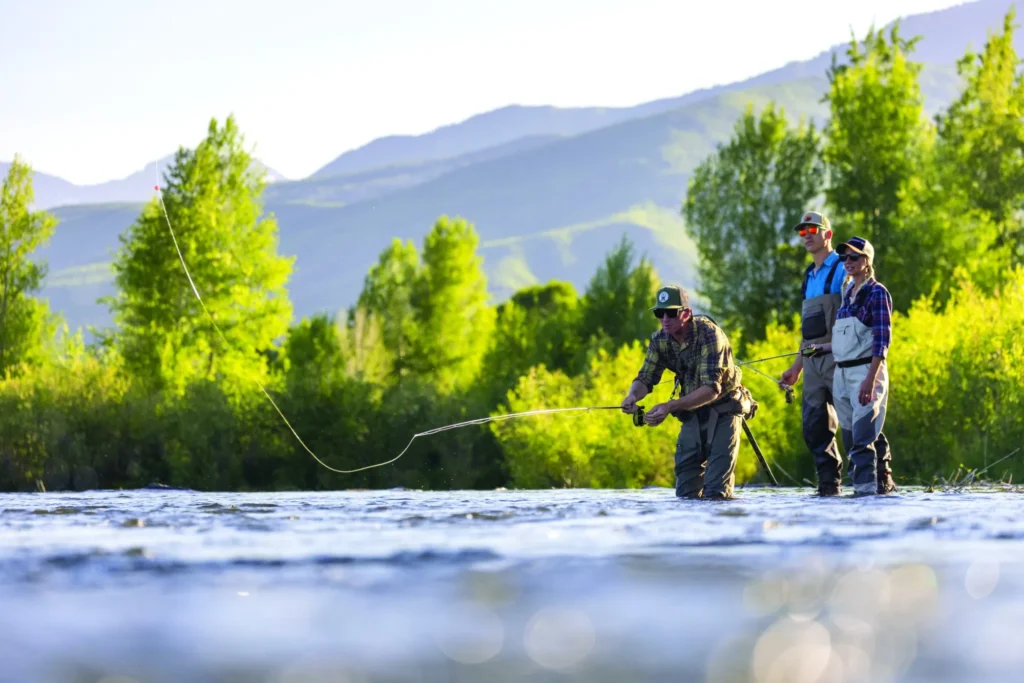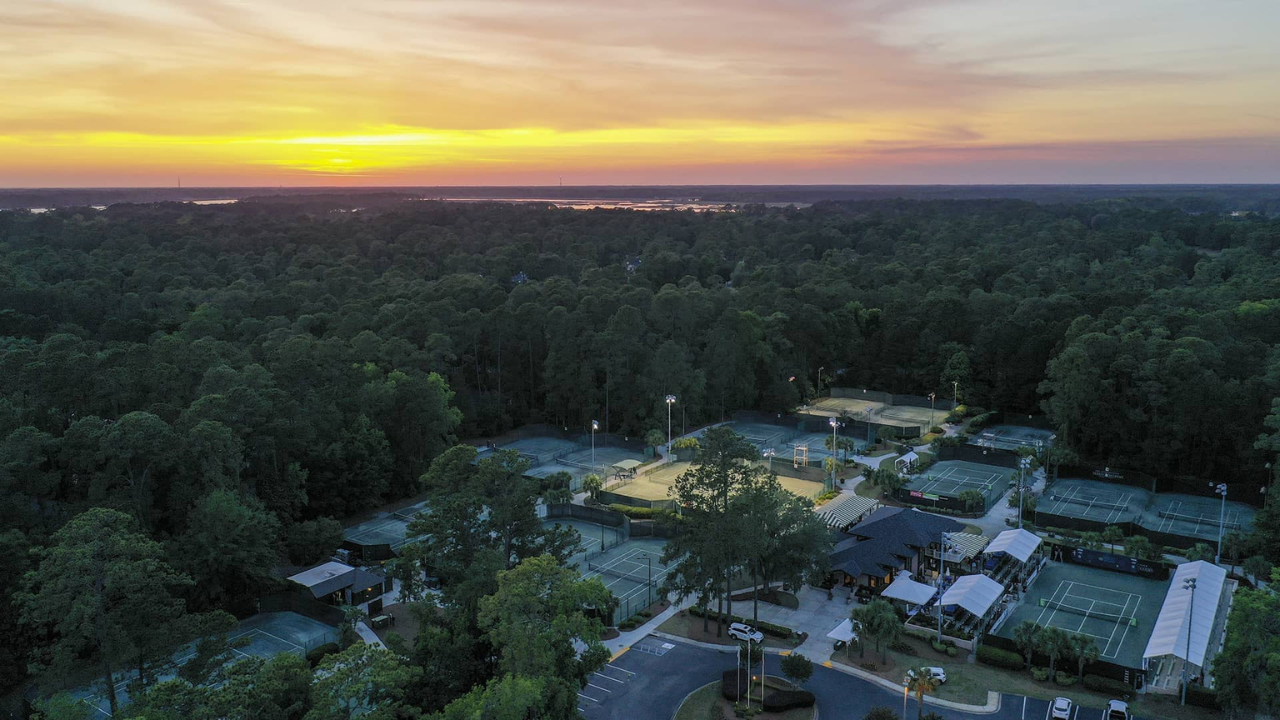Nestled in the heart of St. Louis, Missouri, Forest Park is a sprawling urban oasis that offers a myriad of recreational activities, from hiking and biking to birdwatching and boating. Among its many hidden gems is the opportunity to experience the serene and meditative art of fly fishing. For those seeking a unique way to connect with nature, a fly fishing session with Kevin, a local expert and passionate angler, is an unforgettable experience.
In this article, we’ll dive into the world of fly fishing in Forest Park, exploring its history, the ecological significance of the park’s waterways, and how Kevin’s expertise makes this activity accessible to beginners and seasoned anglers alike. We’ll also touch on the park’s role in forest conservation, the diversity of its forest flora, and the educational opportunities it provides. Whether you’re a fishing enthusiast or a nature lover, this story will inspire you to grab a rod and explore the tranquil waters of Forest Park.
The Allure of Fly Fishing
Fly fishing is more than just a method of catching fish; it’s an art form that requires skill, patience, and a deep appreciation for nature. Unlike traditional fishing, which relies on heavy lures and bait, fly fishing uses lightweight artificial flies to mimic insects and other prey. The rhythmic casting of the line, the gentle ripple of the water, and the thrill of a fish biting create a uniquely immersive experience.
For Kevin, fly fishing is a way of life. A lifelong angler and St. Louis native, he has spent decades honing his craft and sharing his passion with others. His guided fly fishing sessions in Forest Park are designed to introduce newcomers to the sport while offering seasoned anglers new challenges and insights.
Forest Park’s Waterways: A Fly Fisher’s Paradise
Forest Park is home to several bodies of water, including Post-Dispatch Lake, Jefferson Lake, and the River des Peres. These waterways provide the perfect setting for fly fishing, with their calm waters, abundant fish populations, and picturesque surroundings.
Fish Species in Forest Park:
- Bluegill: A popular target for beginners, bluegill are abundant and easy to catch.
- Bass: Largemouth and smallmouth bass offer a more challenging experience for seasoned anglers.
- Catfish: These bottom-dwelling fish are a favorite among those who enjoy night fishing.
- Carp: Known for their size and strength, carp provide an exciting challenge for fly fishers.
The park’s waterways are carefully managed to maintain healthy fish populations and water quality, ensuring a sustainable and enjoyable fishing experience for all.
A Day on the Water with Kevin
Kevin’s fly fishing sessions begin with a brief introduction to the basics of the sport. He covers everything from assembling the rod and reel to selecting the right fly for the conditions. His patient and encouraging teaching style makes even the most novice anglers feel at ease.
What to Expect During a Session:
- Gear Setup: Kevin provides all the necessary equipment, including rods, reels, flies, and waders.
- Casting Techniques: He demonstrates the proper casting techniques and offers personalized feedback to help participants improve.
- Reading the Water: Kevin teaches anglers how to identify promising fishing spots by observing water currents, vegetation, and fish behavior.
- Catch and Release: Emphasizing the importance of conservation, Kevin practices catch-and-release fishing to protect the park’s fish populations.
As participants wade into the water and cast their lines, they’re enveloped by the sights and sounds of nature—the rustling of leaves, the chirping of birds, and the gentle lapping of waves. It’s a moment of tranquility and connection that’s hard to find in the hustle and bustle of city life.
The Ecological Significance of Forest Park’s Waterways
Beyond their recreational value, the waterways in Forest Park play a crucial role in the park’s ecosystem. They support a diverse array of plant and animal life, contribute to water filtration, and help regulate the local climate.
Key Ecological Benefits:
- Biodiversity: The park’s waterways provide habitat for fish, amphibians, birds, and aquatic plants.
- Water Filtration: Wetlands and vegetation along the banks filter pollutants and improve water quality.
- Flood Control: The waterways help manage stormwater runoff, reducing the risk of flooding in surrounding areas.
- Climate Regulation: The water bodies and surrounding vegetation help cool the air, mitigating the urban heat island effect.
By promoting sustainable fishing practices and educating visitors about the importance of conservation, Kevin and the park’s management ensure that these waterways remain healthy and vibrant for future generations.
Forest Conservation: Protecting the Park’s Natural Beauty
Forest Park’s commitment to forest conservation is evident in its efforts to preserve and restore its natural ecosystems. The park’s lush woodlands, wetlands, and prairies provide a sanctuary for wildlife and a haven for visitors seeking respite from urban life.
Conservation Initiatives in Forest Park:
- Tree Planting: The park regularly plants native trees to maintain its canopy cover and support biodiversity.
- Invasive Species Management: Efforts are made to control invasive plants that threaten the park’s native flora and fauna.
- Habitat Restoration: Wetlands and prairies are restored to their natural state, providing habitat for rare and endangered species.
- Sustainable Practices: The park employs eco-friendly practices, such as composting and recycling, to minimize its environmental impact.
These conservation efforts ensure that Forest Park remains a thriving green space that benefits both people and the planet.
The Diversity of Forest Flora: A Living Classroom
Forest Park is home to a rich variety of forest flora, from towering oak trees to delicate wildflowers. This diversity not only enhances the park’s beauty but also plays a vital role in its ecological health.
Notable Flora in Forest Park:
- Oak and Hickory Trees: These native trees dominate the park’s canopy, providing shade and habitat for wildlife.
- Wildflowers: Species like coneflowers and black-eyed Susans add color to the park’s meadows and support pollinators.
- Wetland Plants: Cattails and water lilies thrive in the park’s ponds and wetlands, contributing to water filtration and cooling.
- Rare and Endangered Species: The park is a sanctuary for rare plants, such as the Eastern Prairie Fringed Orchid, which is protected under conservation programs.
The park’s flora also serves as a living classroom, offering opportunities for education and research.
Forest Flora Education: Inspiring the Next Generation
Forest Park is a hub for forest flora education, offering programs and resources to teach visitors about the importance of plants and their role in the ecosystem.
Educational Initiatives:
- Guided Nature Walks: Park rangers and volunteers lead walks to teach visitors about tree identification, plant ecology, and conservation.
- Workshops and Classes: The park hosts workshops on topics like gardening, medicinal plants, and seasonal flora changes.
- Interactive Exhibits: The park’s visitor centers feature exhibits on local flora, rare species, and the importance of biodiversity.
- School Programs: Forest Park collaborates with schools to provide hands-on learning experiences for students, fostering a love for nature and science.
Through these initiatives, Forest Park inspires visitors to appreciate and protect the natural world.
Medicinal Plants: Nature’s Pharmacy
Among the park’s diverse flora are several medicinal plants that have been used for centuries for their healing properties. These plants not only contribute to the park’s ecological value but also offer opportunities for education and research.
Examples of Medicinal Plants in Forest Park:
- Echinacea: Known for its immune-boosting properties, this plant is commonly found in the park’s prairies.
- Black Walnut: The bark and leaves of this tree have been used in traditional medicine to treat skin conditions and infections.
- Milkweed: While primarily known for supporting monarch butterflies, milkweed has also been used to treat respiratory ailments.
- Goldenrod: This vibrant plant has anti-inflammatory properties and is often used in herbal remedies.
By highlighting these plants, Forest Park connects visitors to the healing power of nature and the importance of preserving biodiversity.
Rare and Endangered Flora: Protecting St. Louis’ Natural Heritage
Forest Park is home to several rare and endangered plant species, making it a critical site for conservation efforts. Protecting these plants ensures the survival of unique genetic resources and maintains the park’s ecological balance.
Conservation Efforts for Rare Flora:
- Habitat Protection: Specific areas of the park are designated as conservation zones to protect rare species.
- Seed Banking: Seeds from endangered plants are collected and stored to preserve their genetic material.
- Public Awareness: The park educates visitors about the importance of rare plants and the need for their protection.
These efforts underscore Forest Park’s commitment to preserving St. Louis’ natural heritage.
Seasonal Flora Changes: A Year-Round Spectacle
One of the most enchanting aspects of Forest Park is its seasonal flora changes. Each season brings a new palette of colors and textures, offering visitors a dynamic and ever-changing landscape.
Seasonal Highlights:
- Spring: The park comes alive with blooming wildflowers and budding trees.
- Summer: Lush greenery and vibrant flowers dominate the landscape.
- Fall: The park’s trees put on a spectacular display of autumn colors.
- Winter: Evergreen trees and frost-covered plants create a serene winter wonderland.
These seasonal changes not only enhance the park’s beauty but also provide opportunities for education and recreation.

Tree Identification: Connecting People with Nature
Forest Park offers numerous opportunities for tree identification, helping visitors connect with nature and learn about the park’s diverse tree species.
Popular Trees in Forest Park:
- Bald Cypress: Known for its distinctive “knees” and tolerance to wet conditions.
- Red Maple: A fast-growing tree with brilliant fall foliage.
- American Sycamore: Recognizable by its mottled bark and large leaves.
- Dogwood: A small tree with beautiful spring blossoms.
Tree identification programs and signage throughout the park make it easy for visitors to learn about and appreciate these natural wonders.
Conclusion: A Unique Blend of Recreation and Conservation
Fly fishing with Kevin in Forest Park is more than just a recreational activity; it’s an opportunity to connect with nature, learn new skills, and contribute to conservation efforts. The park’s serene waterways, diverse flora, and commitment to sustainability make it a model for urban green spaces.
Whether you’re casting a line for the first time or simply enjoying the park’s natural beauty, Forest Park offers a unique and enriching experience. So, the next time you’re in St. Louis, take a break from the city’s hustle and bustle and immerse yourself in the tranquility of Forest Park.
-
Tips for Navigating the Park During the Great Forest Park Balloon Race

The Great Forest Park Balloon Race, held annually in St. Louis, Missouri, transforms the sprawling 1,300-acre Forest Park into a vibrant hub of activity, drawing over 100,000 spectators to witness a sky filled with colorful hot air balloons. Scheduled for September 20-21, 2025, this free, family-friendly event—featuring the Balloon Glow on Friday and the Race…
-
National Tennis Tournament’s Return to Forest Park Recalls Dwight Davis Legacy

In September 2023, the National Public Parks Tennis Championships returned to St. Louis, Missouri, marking a century since its inception in 1923. Hosted at the Dwight Davis Tennis Center in Forest Park, this milestone event not only celebrated a sporting legacy but also rekindled the memory of Dwight F. Davis—a St. Louis native whose vision…
-
Be the Heart of the Park: Support Forest Park Today

Forest Park stands as a living testament to the power of nature—a sprawling sanctuary where towering trees, delicate wildflowers, and winding trails invite us to pause, breathe, and connect. For generations, this cherished woodland has been more than just a green space; it’s a vital ecosystem, a classroom for discovery, and a source of solace.…




